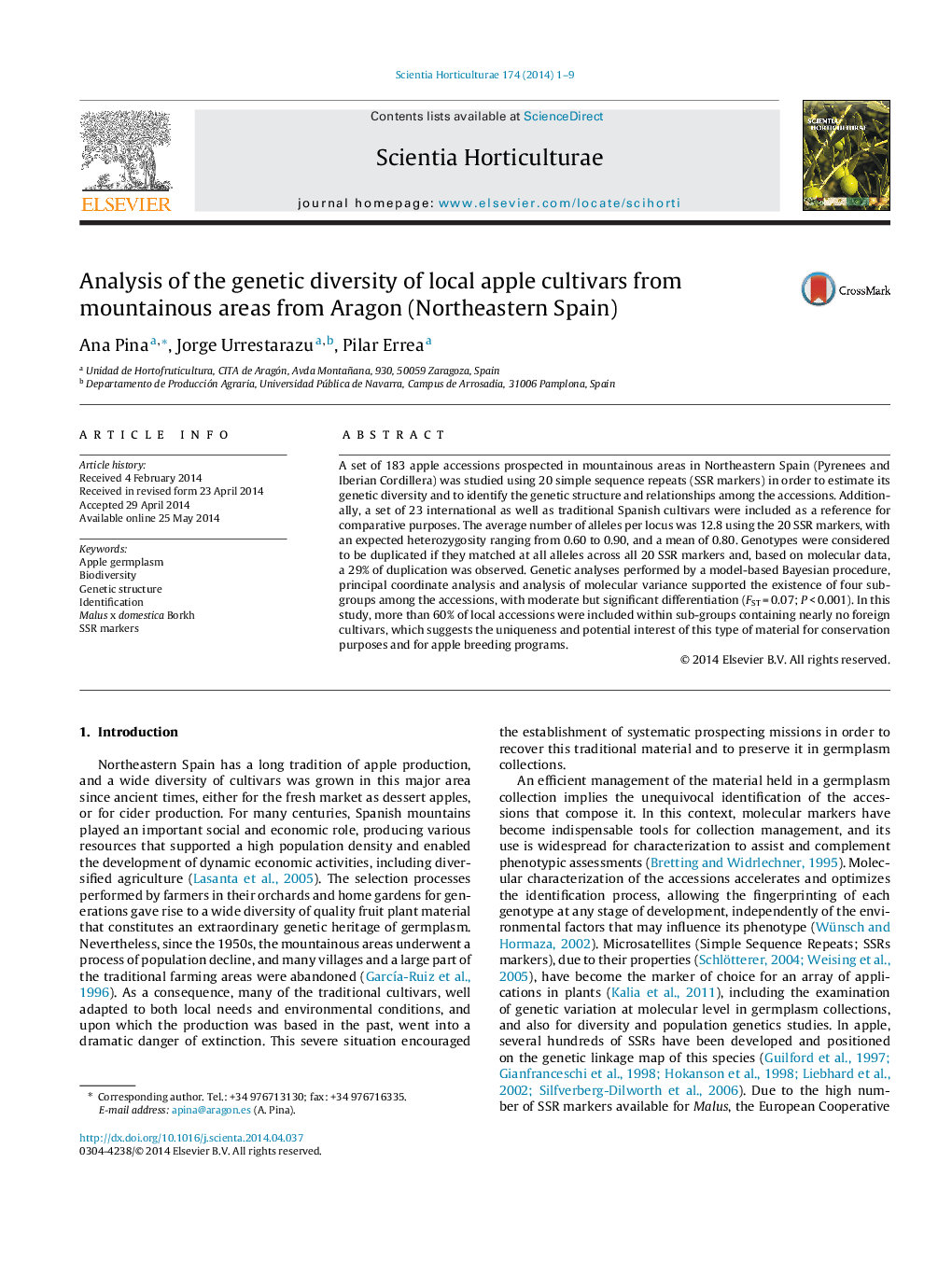| Article ID | Journal | Published Year | Pages | File Type |
|---|---|---|---|---|
| 4566701 | Scientia Horticulturae | 2014 | 9 Pages |
Abstract
A set of 183 apple accessions prospected in mountainous areas in Northeastern Spain (Pyrenees and Iberian Cordillera) was studied using 20 simple sequence repeats (SSR markers) in order to estimate its genetic diversity and to identify the genetic structure and relationships among the accessions. Additionally, a set of 23 international as well as traditional Spanish cultivars were included as a reference for comparative purposes. The average number of alleles per locus was 12.8 using the 20 SSR markers, with an expected heterozygosity ranging from 0.60 to 0.90, and a mean of 0.80. Genotypes were considered to be duplicated if they matched at all alleles across all 20 SSR markers and, based on molecular data, a 29% of duplication was observed. Genetic analyses performed by a model-based Bayesian procedure, principal coordinate analysis and analysis of molecular variance supported the existence of four sub-groups among the accessions, with moderate but significant differentiation (FSTÂ =Â 0.07; PÂ <Â 0.001). In this study, more than 60% of local accessions were included within sub-groups containing nearly no foreign cultivars, which suggests the uniqueness and potential interest of this type of material for conservation purposes and for apple breeding programs.
Related Topics
Life Sciences
Agricultural and Biological Sciences
Horticulture
Authors
Ana Pina, Jorge Urrestarazu, Pilar Errea,
